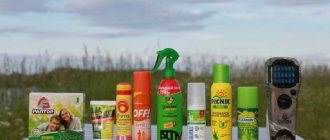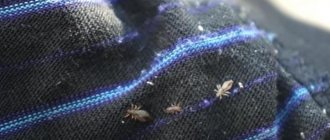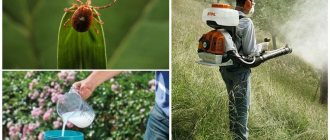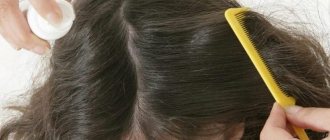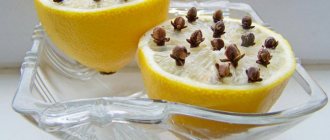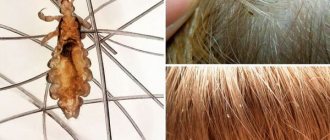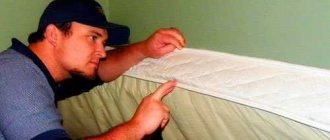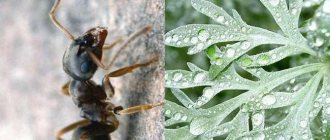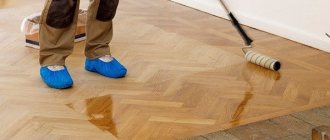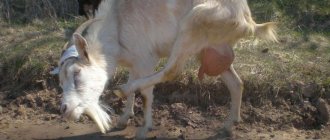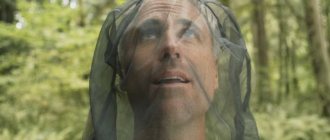Symptoms of lice and nits in children
Lice infestation has a special medical name - pediculosis.
This term comes from the Latin "pediculus" - louse. With pediculosis, bloodsuckers - lice - appear in a person's hair. They feel at ease on human skin: they feed on blood, reproduce, and lay up to 15 eggs a day. A couple of lice will quickly create a whole colony, and then the symptoms of the problem will not be long in coming. The main symptom of lice in children is the presence of nits - small white eggs - in the hair. Nits are very similar to dandruff, but they are very difficult to comb out and practically cannot be washed off. You can also see lice in your hair, but these bloodsuckers are quite mobile, so they only catch the eye of a meticulous searcher.
The second clear sign of pediculosis is itching of the skin under the hair at the sites of lice bites. In addition, small wounds may appear on the skin from constant scratching of the bite sites.
— Very often, symptoms of lice do not appear immediately after infection, but after several days, and sometimes weeks. The fact is that in most cases, pediculosis is transmitted by getting nits on the hair, not lice, which turn into adults only after two weeks, explains general practitioner Aigul Kharisova . — Children with lice become restless, restless, and constantly scratch their heads. They feel discomfort, but do not understand what it is connected with.
Since children cannot diagnose themselves, parents should take a closer look at their behavior. If your child begins to scratch his head frequently, fidget a lot, and whine, examine his scalp. It is easier to get rid of lice in children before there are too many of them.
Table: frequency of inspection for head lice in various organizations
On the territory of preschool and school institutions, as well as sanatoriums and other institutions, children are often infected with lice. To prevent the appearance of signs and development of this disease, you should study the information in the table below. It contains data on the recommended frequency of inspection for lice.
| Object type | Features of the check, frequency of its implementation |
| Preschool institutions, orphanages, boarding schools | Children under 6 years of age are examined every day, that is, monthly. When you first enter an educational institution, you are checked for lice. If a child has not visited kindergarten for more than 7 days, monitoring the condition of the outer coverings of the head and hair is required. |
| Schools | Children are examined upon returning to school after the holidays. For prevention, the condition of the hairline is monitored every 3 months. New students are examined at the clinic, when a certificate of the child’s epidemiological environment is taken. If at least 1 case of head lice is recorded, unscheduled checks of children's hair are carried out |
| Sanatoriums | It is recommended to check only upon arrival |
| Clinic, hospital | Upon admission to a medical institution (in the emergency room), the patient is examined. The recommended frequency of checks is 7 days. An unscheduled examination is carried out when one of the patients is found to have parasites |
| Places of restriction and imprisonment | The recommended break between procedures to assess the condition of the hairline is 30 days. |
Examination of the child's head
How to get rid of lice and nits in children
Modern methods of combating nits in children are effective and simple; radical measures such as shaving hair are used extremely rarely. To get rid of nits in children, you need to hit them from several sides.
Firstly, you should constantly and thoroughly comb out nits with a private comb. It can be difficult with small children, because they don’t like to sit still for a long time, but it’s worth a try.
Affiliate program for integrators Secondly, you need to wash the child’s hair with a special shampoo, anti-pediculosis soap or treat it with emulsions, aerosols, ointments, lotions. The therapist will tell you which means to choose, because we are talking about chemistry.
Thirdly, you will have to treat the bedding on which the child sleeps. Pillows, pillowcases - everything needs to be washed and steamed with a hot iron so that not a single nit survives.
For greater effectiveness, it is better to combine all these measures. For example, first wash your hair with the selected shampoo, then comb your hair. And to make scratching them easier, you can rinse them first with a weak solution of vinegar.
Two or three days of persistent effort and you will be able to get rid of nits in children.
Drug treatment
It is easier to get rid of lice in children if you use special antiparasitic agents: shampoos, creams, ointments. They differ from conventional washing shampoos in that they contain chemical or biological additives. These components are poisonous to bloodsuckers, but relatively safe for children.
— The main drugs used to treat head lice are benzyl benzoate, parasidosis and permethrin. These can be either shampoos or creams for external use. For lice in children, permethrin is usually preferred. This insecticide is capable of paralyzing parasites and is relatively safe for children, explains general practitioner Aigul Kharisova.
Folk remedies
Some parents are suspicious of “pharmacy chemicals” and do not want to wash their child’s hair with insecticides. In this case, you can resort to folk remedies. The most effective of them is to completely shave the child and disinfect his clothes and bedding. This is actually a 100% way to get rid of lice in children.
— A very common way to combat lice is to use kerosene, dichlorvos, vinegar or gasoline. Yes, the effectiveness is, of course, undeniable. But few people think about the dangers of these substances. After all, kerosene is a substance with a high fire hazard, dichlorvos is actually poison. Vinegar dries out hair, and a concentrated solution can cause severe burns, reminds physician Aigul Kharisova.
Isn't it better to entrust your child's health to a professional and not try to experiment yourself?
When to see a doctor
The earlier the better. In the case of lice and nits in children, this rule also applies, because while there are not very many blood-sucking lice, you can get rid of them without hassle. In addition, few people know that lice can carry very bad diseases.
— The most unpleasant thing is the ability of the head louse to carry the bacterium Borrelia (Borrelia recurrenti), which causes epidemic relapsing fever. Infection occurs when an insect is accidentally crushed while scratching a bite, notes general practitioner Aigul Kharisova.
The louse is also a carrier of typhus and Volyn fever. In addition to nit infestation, a bacterial infection, such as staph, can easily occur. Bacteria can penetrate the skin where the bites are scratched.
Folk method No. 3: Table vinegar
A common sense approach, acetic acid dissolves the thick adhesive film that cements nits at the base of the hair. As a result, they can be easily removed from the hair.
To avoid burning the scalp, the vinegar was diluted with water, coarse salt was added, and to be sure, a little alcohol, which also dissolves the protective capsule of the nits. This method has a significant drawback - vinegar in combination with alcohol dries out the hair, turning it into a washcloth, and also irritates the scalp, which is already scratched from insect bites.
Prevention of lice and nits in children
— From childhood, a child must understand that any games or communication should involve a minimum distance between those participating. It is believed that lice can jump, but this is not true. Infection occurs only through direct contact, recalls general practitioner Aigul Kharisova.
It is also important to instill in your child that personal hygiene products and linen are personal items and you should not use someone else’s under almost any circumstances.
It is better to give preference to neat hairstyles. In kindergarten and on the street, it is better to wear long hair in a ponytail or braids, especially during public events.
Parents should visually inspect their children's hair regularly. This will detect nits and lice at an early stage and prevent the bloodsuckers from spreading.
- If, nevertheless, the child is diagnosed with lice, then it is necessary to consult a doctor and, following his recommendations, carry out treatment. You can safely get rid of lice in children at home,” concludes general practitioner Aigul Kharisova.
Well, briefly, the rules for preventing lice and nits in a child can be summarized in several points:
- Wash your hair and body regularly;
- Wash dirty clothes promptly;
- be sure to wash new items after purchase;
- do not wear someone else's clothes;
- Avoid sleeping on someone else's bedding.
Choosing an effective shampoo
To choose a chemical agent against parasites, it is better to consult a doctor, because these drugs are toxic and are not suitable in every case.
Before you buy anti-lice shampoo, remember a few tips:
- make sure that the chosen remedy can be used by a child (some drugs are allowed from three years old, some from five, and some are completely contraindicated for children);
- pay attention to contraindications, a number of shampoos cannot be used if you have skin diseases or hair problems, other products are prohibited for asthmatics and allergy sufferers;
- Before using antiparasitic shampoo, perform a test for individual intolerance: apply the drug to a sensitive area of the child’s skin and wait. If red spots or rashes remain on the skin after exposure to shampoo, then it is better to discard this product.
Strategy to combat them
All head lice shampoos are used in approximately the same way. The stages are:
Carefully read the instructions for the drug and wear rubber gloves. Apply the drug according to the dosage to damp hair, distribute well, beat into foam.
Pay special attention to treating the roots. Maintain the period in accordance with the information on the packaging. Attention! The inserts of many shampoos indicate a period of 10-15 minutes.
However, as practice shows, the most effective effect on parasites occurs half an hour after application.
Attention! The inserts of many shampoos indicate a period of 10-15 minutes. However, as practice shows, the most effective effect on parasites occurs half an hour after application.
- Rinse your hair well. You can use a vinegar solution in a 1:1 ratio.
- Comb wet curls with a special comb, which can be easily purchased at the pharmacy.
- Wash your hair with regular shampoo.
It is recommended to find out how the product affects the skin before the first use. To do this, apply a little shampoo to a small area of the scalp, near the temple or on the bend of the elbow. The reaction is observed throughout the day.
What are the contraindications?
The use of Dichlorvos is refused in the following cases:
- for diseases of the respiratory system;
- during pregnancy;
- when breastfeeding;
- if you are allergic to the components of the drug;
- for diseases or damage to the scalp.
It is forbidden to get rid of parasites in young children using a toxic substance
Dichlorvos is not used during pregnancy and breastfeeding.
Pros and cons of folk remedies
Folk remedies are always at home, at hand. Affordability and ease of use are the main advantages of using these methods to get rid of lice. Another plus is the low cost of most components that are used in folk recipes.
Among the disadvantages of such methods of lice removal, we highlight:
- • low efficiency – the procedure has to be repeated several times
- • risk of developing allergies, burns and other side effects;
- • high toxicity of many products;
- • negative impact on hair condition;
- • presence of contraindications.
Kinds
Now you can find several types of this drug, with the common name Dichlorvos. Here are their varieties:
- Dichlorvos Neo. The main active substance in its composition is cypermethrin. A distinctive feature of this species is the complete absence of odor. Thanks to its specially selected composition, it has a powerful and almost instantaneous effect.
- Dichlorvos Eco. In this option, the active substances are pyrethrin and a combination of various insecticides. To make it more comfortable to use, aromatic additives are also included, in this case the scent of lavender.
- Dichlorvos Universal. Helps get rid of many types of parasites, not just lice. In addition to a wide spectrum of action, it has very strong effectiveness. Disadvantages include an unpleasant odor.
- Dichlorvos Varan. Almost identical to the previous options. Only the scent of lemon was used as a fragrance.
- Dichlorvos Terminator. The principle of action of this drug is the paralyzing effect on insects of two main components: cypermethrin and tetramethrin. But for the consumer, in practical application, the differences are invisible.
In stores you can also find products from foreign companies. In terms of effectiveness and composition, it is identical to Russian drugs. A special feature can be considered the widespread use of perfumed additives.
We recommend reading: symptoms and signs of head lice in humans.
Treatment Options
If dichlorvos poisoning has occurred, there is no need for treatment as such. You just need to remove the drug from the affected areas or stop its effects. Taking medications is necessary in the presence of allergic reactions. In case of poisoning of children under one year of age, seeking medical advice is essential. In case of severe poisoning, strengthening injections are prescribed that can relieve feelings of nausea and cramps.
Source
Folk method No. 8: Tea tree oil
People often try to get rid of blood-sucking parasites with the help of essential oils. Not all essential oils are equally useful and effective. A well-known remedy for lice is tea tree oil.
The product has antiseptic and healing properties. It is one of the most effective essential oils.
Tea oil is used in combination with vodka. 5 drops of each component are mixed and applied to the head using a cotton swab. The mixture can be left overnight. To increase efficiency, the procedure should be repeated several times. The product can be used for prevention - repelling lice with a pungent odor.
Precautionary measures
After carefully studying the complete information about this drug, you should take all safety precautions. This will guarantee that the desired goal will be achieved and new problems will not arise. List of necessary actions:
- First you need to make sure that there are parasites. A thorough examination of all family members is mandatory.
- To carry out the procedure, create the possibility of ventilation, or better yet, carry it out outside the house.
- Make sure there is no intolerance to Dichlorvos. To do this, a test is carried out: apply a small amount of spray to the skin of the elbow or the back of the hand and leave for 30 minutes. If there is no allergic reaction on the skin or in the person’s well-being, then you can proceed.
- Be sure to prepare the necessary items in advance: a robe or sheet to protect the body;
- a durable, leak-proof plastic bag that fits your head size;
- latex gloves;
- respirator or medical mask;
- glasses;
- cloth headband;
- comb for combing out dead parasites.
Strict adherence to all recommended points will ensure the desired result with the greatest safety for you.
